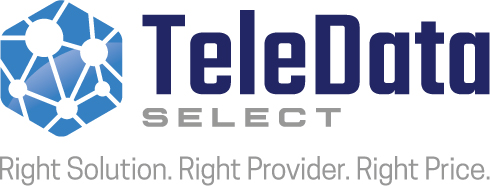Are you aiming to reduce costs and boost efficiency in your IT department? Consider the advantages of outsourcing with managed services! In this blog post, we’ll delve into how collaborating with a managed service provider can lower expenses while enhancing your IT team’s performance. Bid farewell to expensive in-house solutions and welcome streamlined processes and savings – continue reading to learn about the benefits of outsourcing for your organization.
Introduction to Managed Services
In today’s fast-paced IT market, staying competitive demands more than just keeping up with the latest technologies; it requires strategic thinking and cost-efficiency. Managed services can significantly optimize IT operations while reducing expenses. Outsourcing allows IT departments to focus on core business activities, driving productivity and innovation. By leveraging managed services, businesses can achieve a competitive edge and improve overall efficiency. Let’s explore how this approach can revolutionize IT management and generate substantial savings for your organization.
The Benefits of Outsourcing for IT Departments
Outsourcing for IT departments offers numerous benefits, helping businesses thrive in today’s competitive market. Partnering with managed service providers grants access to specialized expertise and the latest technologies without large investments in training or infrastructure. This approach leads to significant cost savings by reducing overhead expenses and shifting from fixed to variable costs. Outsourcing also provides flexibility and scalability, allowing quick adaptation to market changes and enabling internal IT teams to focus on strategic initiatives. Overall, outsourcing empowers IT departments to remain agile, competitive, and technologically advanced cost-effectively.
Reducing Costs with Managed Services
Managed services provide a cost-effective solution for IT departments aiming to streamline operations and cut expenses by outsourcing tasks like network monitoring, cybersecurity, and help desk support. This approach reduces overall operational costs by accessing specialized expertise without the need for additional in-house staff or costly training programs. It allows IT teams to focus on strategic initiatives rather than routine maintenance, while also offering scalability to adjust resources as needed. By converting fixed IT expenses into variable costs, businesses can better align expenditures with fluctuations in demand, ultimately enhancing productivity and competitiveness in today’s dynamic market.
Understanding the Different Types of Managed Services Available
Encompass a range of offerings tailored to diverse business needs. Proactive monitoring and maintenance involve remote oversight of IT systems to preempt issues, reducing downtime and ensuring smooth operations. Cloud services enable access to resources and applications via the internet, offering scalability, flexibility, and cost-effectiveness. Managed security services focus on safeguarding data through continuous monitoring, threat detection, and incident response in today’s digital landscape. Help desk support provides timely technical assistance, ensuring minimal disruption and enabling employees to resolve issues promptly.
Tips for a Smooth Transition to Managed Services
Transitioning to managed services can transform your IT department, but planning is crucial for a seamless shift. Clear communication with stakeholders about the benefits is essential for transparency and buy-in. Engaging your team from the start ensures their involvement and readiness for the change, supported by necessary training. Establishing realistic timelines and milestones keeps the transition on track, with regular check-ins with your provider to address any issues promptly. Celebrating small successes boosts morale and maintains motivation throughout the journey to more efficient IT operations with managed services.
Challenges and How to Overcome Them
Embracing managed services offers IT departments cost reductions and efficiency improvements, but challenges may arise. Internal resistance due to job concerns can be managed through transparent communication and employee involvement in the transition. Finding a compatible managed service provider requires thorough research, industry experience validation, and rigorous security protocols to safeguard sensitive data. Integration with existing systems demands a detailed implementation plan to minimize disruptions. Consistent stakeholder communication throughout the process is crucial for successfully navigating these challenges.
Conclusion: The Future of Outsourcing and Managed Services in IT
Offers a cost-effective solution for IT departments aiming to streamline operations and leverage advanced technologies. As businesses navigate a competitive IT market, outsourcing IT functions becomes essential for maintaining competitiveness and reducing costs. By partnering with the right managed service provider and adopting tailored solutions, companies can secure their position in a digital-first environment. The future of IT outsourcing and managed services promises substantial benefits, including enhanced efficiency and strategic growth opportunities. Staying informed about industry trends, choosing reliable partners, and addressing transition challenges proactively are crucial for maximizing the benefits of managed services in today’s dynamic technology landscape.

John Hagan, founder and CEO of TeleData Select, leads a managed IT and data company based in Atlanta, GA, serving clients across the US and internationally. The company uses a hybrid collaboration team model that leverages a network of technology providers to help businesses find the right IT solutions at the best prices. TeleData Select offers complimentary telecom audits and assistance with managed IT projects to help businesses stay ahead in the evolving tech landscape.
Feel free to call us direct at 404-439-4480 or email today to have a conversation or click on this link and book some time on our calendar today.





0 Comments